According to Brian Scott, a senior analyst in Vanguard’s Investment Strategy Group, speaking at the Investment Management Consultant Association’s annual conference, the rise of alternative investments has been profound over the past 10 years:
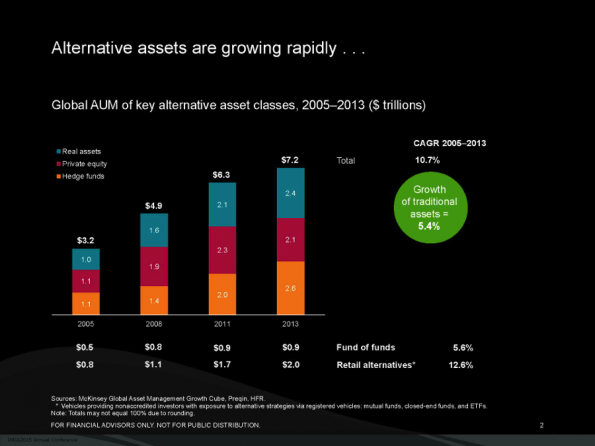
And retail investors are on board. Investor money in liquid alternatives, or alternative investment strategies in a mutual fund or ETF wrappers, have grown from $57 billion in 2008 to $171 billion at the end of 2014:
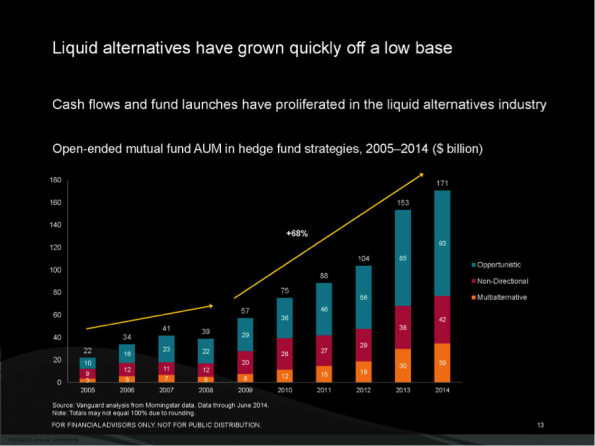
What’s driven the increased retail interest in alternative? According to Scott, it’s the widely reported success that endowments and institutions have had using the alternative strategies:
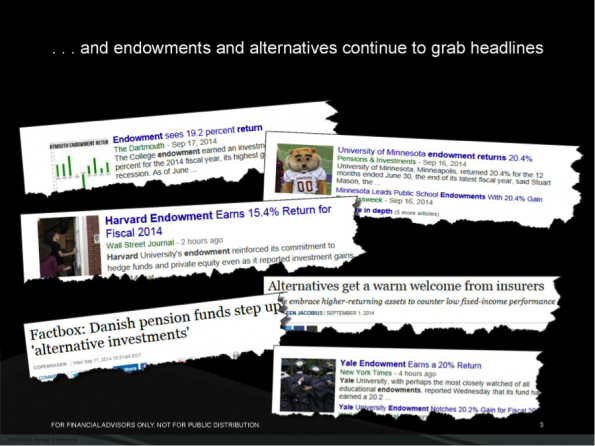
The Yale Case Study
In fact, endowments report 4 to 6 percentage points better performance than the traditional 60 percent stock, 40 percent bond portfolio traditionally available to retail investors. Given the power of compounding, Scott says, that makes for an outsized performance that most retail investors would love to emulate.
As a case study, no endowment has gotten as much attention, or been praised so highly, as Yale’s. And the performance is impressive, compared to a retail investors’ balanced portfolio:
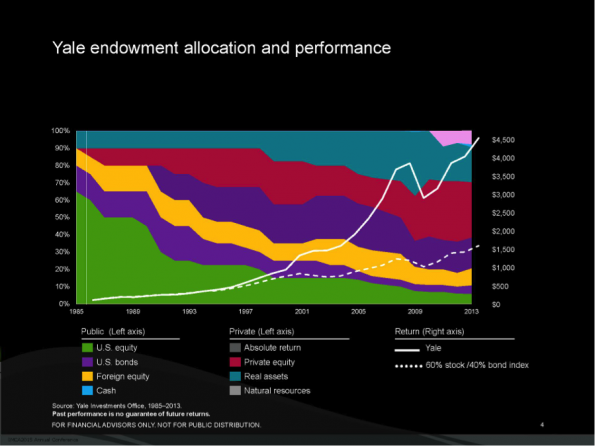
But is this true of all endowments? The endowment universe is skewed toward large funds: 10 percent of all endowment funds own 72 percent of endowment assets, according to Scott. And the smaller endowments, those with less than $100 million in assets, don’t perform as well as those with over $1 billion in assets, even though the smaller endowments use of alternative investment strategies has grown twice as fast as their larger brethren:
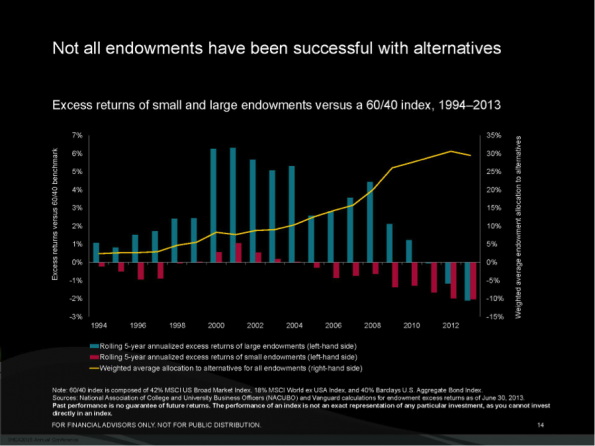
Large endowments exceed because of three things, Scott said: They got into alternatives early, before there was too much money chasing too few strategies, they have large staffs of investment professionals to evaluate the options (Harvard’s endowment has 98 research professionals), and they are able to use their size to get alternative managers to lower their fees (Yale’s David Swensen, the chief investment officer at Yale’s endowment, has said publically that price alone is a reason not to talk to a manager.)
“If you can’t replicate those advantages, are you better off in a mutual fund? I think the answer to that is yes,” said Scott.

